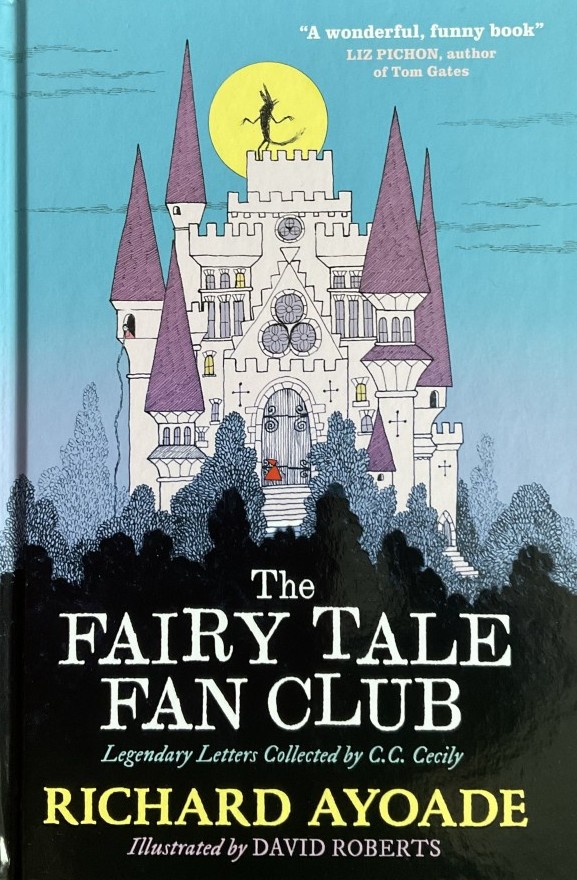Inspiring Young Readers
 posted on 25 Oct 2024
posted on 25 Oct 2024
The Fairy Tale Fan Club by Richard Ayoade, illustrated by David Roberts
Traditional fairy tales retold in lots of different ways and interpreted by various different illustrators are always a treat. The essential tropes and underlying morals can transcend time and culture and so be appreciated by both children and adults. Most of the originals were pretty dark and menacing with gruesome details and so many have been sanitised in more recent times by those who believe that younger children need to be protected for as long as possible, even if they seem to relish bloodthirsty stories!
This volume is one of the growing trend of playing around with elements of the original story and is sometimes described as ‘fractured fairy tales’. This involves twisting them about to reorganise the events and often to emphasise humorous features. These kind of stories also focus on a range of characters to encourage the reader to understand different points of view and perspectives. The ‘baddies’ are sometimes given a chance to redeem themselves as we learn about their complex personalities and how they have been previously misunderstood. The author uses the narrative voice of C.C. Cecily, Senior Secretary of the Fairy Tale Club who explains that she/he has the responsibility to pass on correspondence from children to particular characters. The detailed introduction explains how this role entails qualities of organisation, editing and ‘administrative mastery’ that is much appreciated by significant princes and princesses. I like the way in which the narrator is established as a fastidious, pompous sounding individual who likes to impress the reader.
The resulting selection is a delightful example of correspondence between individual fans and fairy tale characters. I am certain that this model will inspire some equally creative letters from children in the classroom. I really hope that having looked closely at the detailed, very funny drawings, they will also be encouraged to draw their own characters.
I really enjoyed every one of the exchanges but will just comment briefly on a couple of favourites. Ira ( aged 8) has written to Little Red Riding Hood reasonably questioning how she could possibly not tell the difference between a person and a wolf. The defensive reply points out:
‘Don’t you think it’s weirder that a wolf was talking to me in the first place?’
She then explains that her grandmother is unusually hairy, often howls, dribbles and attacks sheep! The facing pen and ink illustration by the wonderfully anarchic David Roberts shows the old woman ‘ in happier times’ creeping up behind some sheep, obviously with ill intent.
Kenji ( aged 9 3/4) sends a series of 4 postcards to Pinocchio because she is bored on holiday. She wants to some important advice including the benefits of lying, whether anyone was operating his movements by hand when he was in puppet form and if he knows of anyone who has transitioned from being a boy to a puppet. He does his best to answer these challenging questions and is particularly indignant at the misinformed view about his identity: he was a marionette for goodness sake!
I strongly recommend this unusual and stimulating collection of correspondence published by Walker Books. It should be available from your local independent bookshop - who will be happy to order it for you if they don’t have it on their shelves.
Karen Argent
October 2024



